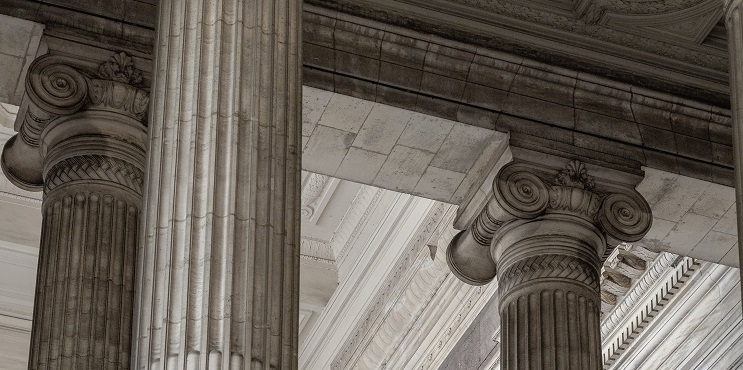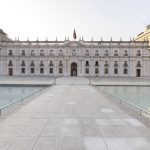Process for a New Constitution 2023
AGREEMENT FOR A NEW CONSTITUTION IN CHILE
- On December 12, 2022, the main political parties with Congress representation announced an agreement for a new Constitution in Chile, called “Agreement for Chile”. This has been well received by the markets and business community.
- The Agreement for Chile includes 12 constitutional bases that shall be contained in the new draft Constitution. In addition, the bodies that will participate in the drafting of the new proposal will be: a Constitutional Council, an Expert Commission and a Technical Committee on Admissibility. Finally, it establishes a constitutional itinerary, which will conclude with a ratifying plebiscite.
- This Agreement for Chile must now become a bill of law for a constitutional reform.
- As background, Chile already faced a constitutional process after the Agreement for Peace and the New Constitution of 2019, which resulted in a rejected constitutional proposal.
12 constitutional bases for the draft of the new Constitution
- Chile is a democratic Republic, with sovereignty residing in its people.
- The State of Chile is unitary and decentralized.
- Sovereignty has as its limit the dignity of the individual and human rights recognized in international treaties ratified by Chile and in force. Terrorism in any of its forms is contrary to human rights.
- The Constitution recognizes indigenous peoples as part of the Chilean nation, which is one and indivisible. The State shall promote their rights and cultures.
- Chile is a Social and Democratic State governed by the rule of law whose purpose is to promote the common good. It recognizes fundamental rights and freedoms and promotes the progressive development of social rights, subject to the principle of fiscal responsibility and through State and private institutions.
- The national emblems are the flag, the coat of arms and the national anthem.
- Chile has three separate and independent powers: (i) the Executive Branch with a Head of Government with exclusive initiative in public spending; (ii) the Judicial Branch, based on jurisdictional unity, with full respect for final and enforceable judicial decisions; and (iii) the Legislative Branch, with two chambers: a Senate and a Chamber of Deputies).
- Chile constitutionally establishes as autonomous institutions, among others, a Central Bank, the electoral justice system, the Public Prosecutor’s Office and the Office of the General Comptroller of the Republic.
- Chile protects and guarantees fundamental rights and freedoms such as the right to life, equality before the law, the right to property, freedom of conscience and religion, among others.
- Chile constitutionally establishes the Armed Forces and the Law Enforcement and Security Forces, subordinated to civilian power.
- The Constitution establishes at least 4 states of constitutional exception: states of assembly, siege, catastrophe and emergency.
- Chile is constitutionally committed to the care and conservation of nature and its biodiversity.
The new constituent bodies
The Agreement includes three new bodies that will participate in the discussion and drafting of the new Constitution:
1. The Constitutional Council. Its role is to discuss and approve the constitutional norms and the final proposal. The quorum required for the approval of each norm and the final proposal would be 3/5 of its members in office.
- The Council is formed by 50 members elected by direct popular vote, with universal and mandatory voting, and under the principle of parity of entry and exit. Additional reserved seats for indigenous people will be allocated according to the percentage of effective voting.
2. The Expert Commission. Its role will be (i) to draft the preliminary draft to be the basis for discussion and drafting of the new constitutional text, in the style of a matrix idea, and (ii) issue a report on the final proposal of the new constitutional text by the Constitutional Council. Its decisions require a quorum of 3/5 of its members. It may participate in all instances of discussion.
- The Commission will respect parity and be composed of 24 members elected by the Senate and the Chamber of Deputies, in proportion to the current representation of the different political forces and approved by 4/7 of its members in office. They shall be individuals of indisputable professional, technical and/or academic credentials.
3. The Technical Committee on Admissibility. In charge of reviewing the rules approved in the different instances presented to the Expert Commission and/or the Constitutional Council, to determine their possible inadmissibility when they are contrary to the institutional bases. It shall rule upon a reasoned request of 1/5 of the Constitutional Council or 2/5 of the Expert Commission and its decisions shall not be subject to appeal before any national or international body.
- This Committee will be composed by 14 members elected by the Senate at the proposal of the Chamber of Deputies (the quorum for approval is 4/7 of its members in office, both for the proposal and for the election). They must be reputable jurists with outstanding professional and/or academic background.
The exit plebiscite
The final proposal for the new Constitution must be submitted to a mandatory vote plebiscite to ratify or reject it.
Constitutional itinerary

The constitutional reform bill of law implementing this proposal will be submitted to Congress for discussion as soon as possible and the immediate discussion will be requested. This is relevant, because it will constitute the implementation of what, up to now, is more of a significant political agreement and may contain more details about the new constitutional process.
Some questions
While the constitutional reform bill may address these issues in more detail, several questions can already be raised:
- What happens if in the plebiscite the proposed new Constitution is rejected once again?
- Will there be instances of citizen participation, as in the previous constitutional process?
- What will be the significance of the constitutional bases? What normative rank will they have? How much will they limit the constitutional power?
- Which will be the Constitutional Council procedure to approve the rules and then carry out the harmonization of these legal rules, before sending the final proposal to the Commission of Experts? The previous Constitutional Convention was structured under thematic commissions, and then other commissions that functioned during the harmonization process.
- Will the rules of procedure of the Senate or of the Chamber of Deputies be used for the purpose of prioritizing the drafting and approval of constitutional norms, or will it be necessary to devise ad-hoc rules of procedure, considering that different bodies will be involved in the drafting of the proposal? In that case, which of the bodies to be created will have the power to design and approve the new rules of procedure? The prior Constitutional Convention began the substantive discussion of the rules only three months after it initiated its work, because the first stumbling block was to agree on its rules of procedure.
- Will the intervention of other State bodies be expressly excluded during the process? In the previous process the Supreme Court could rule on certain matters.




